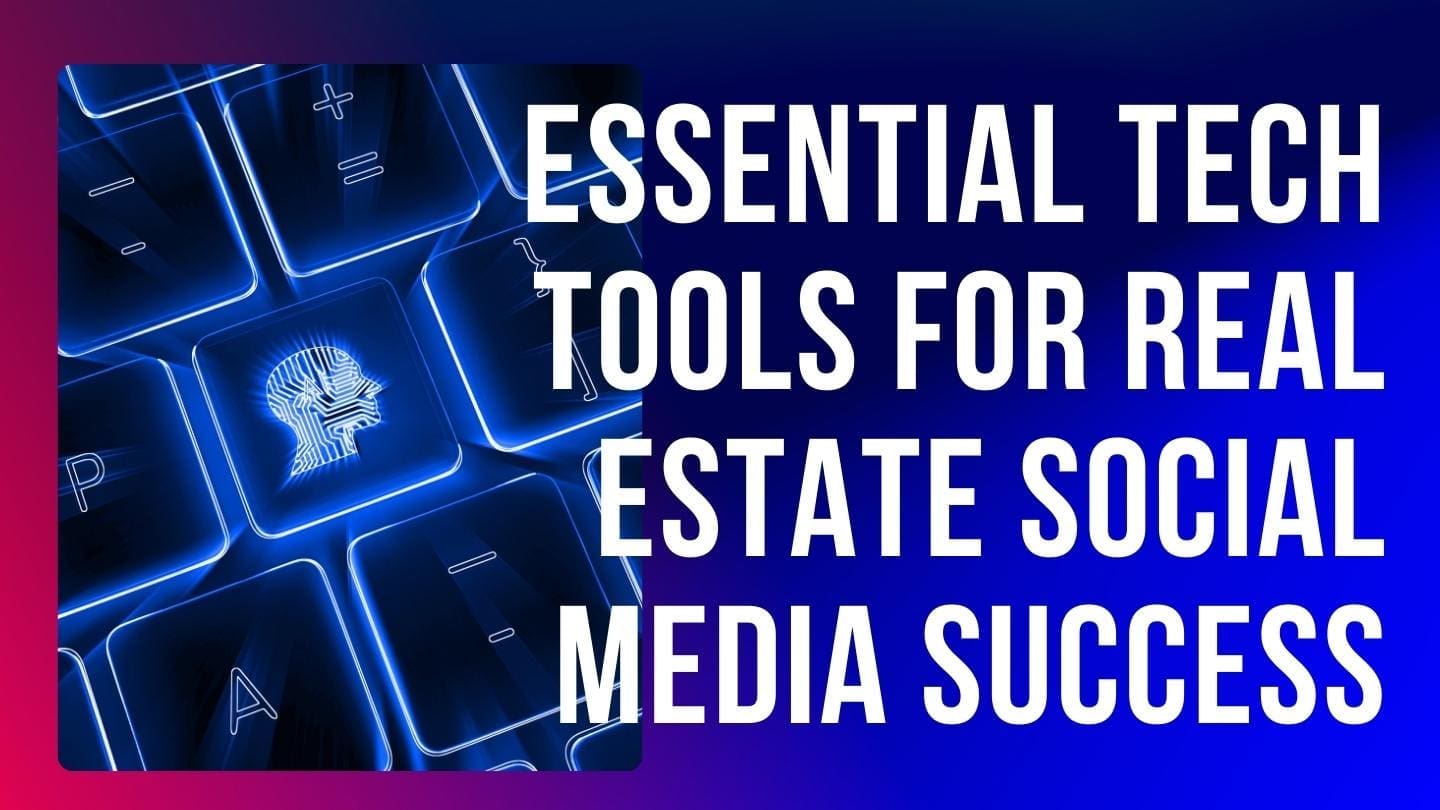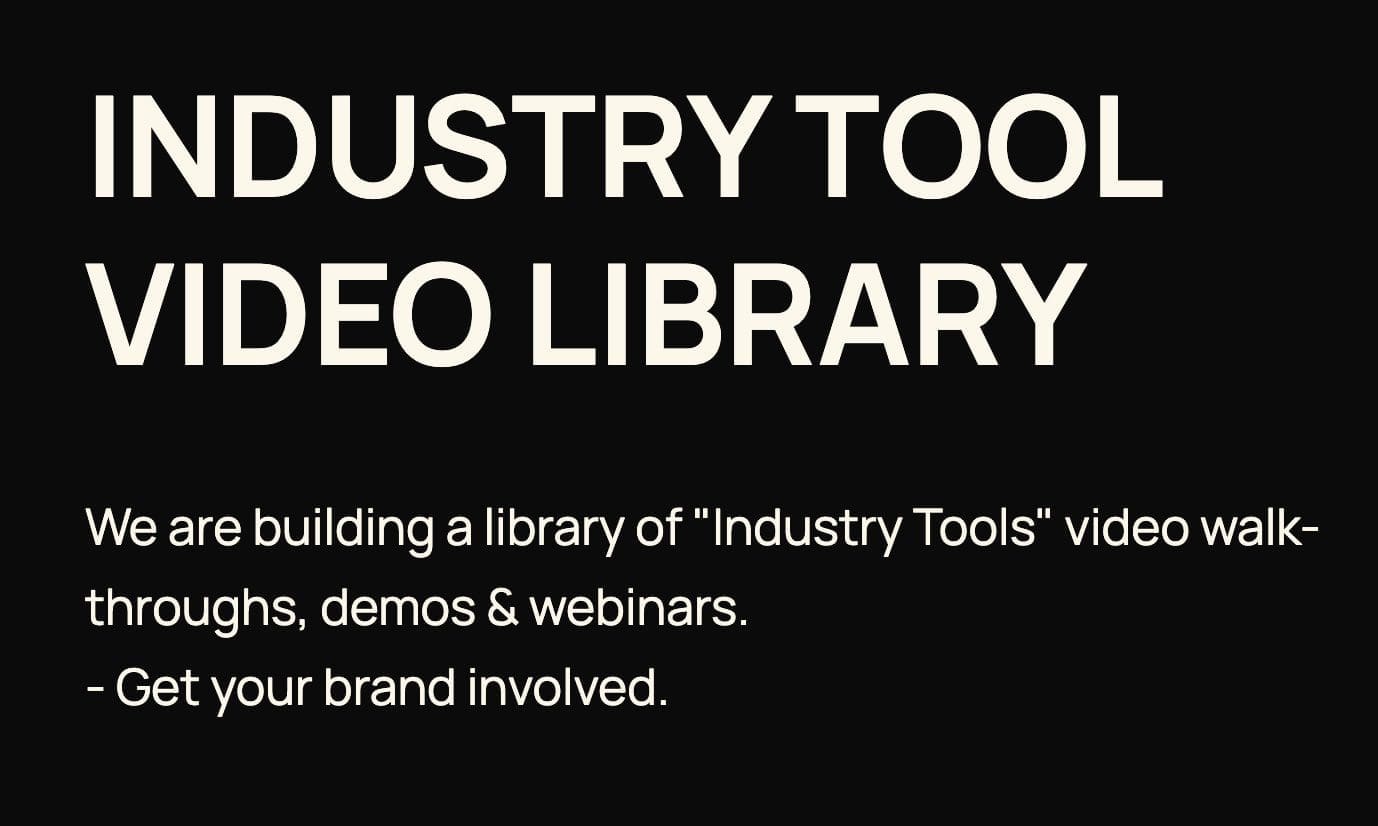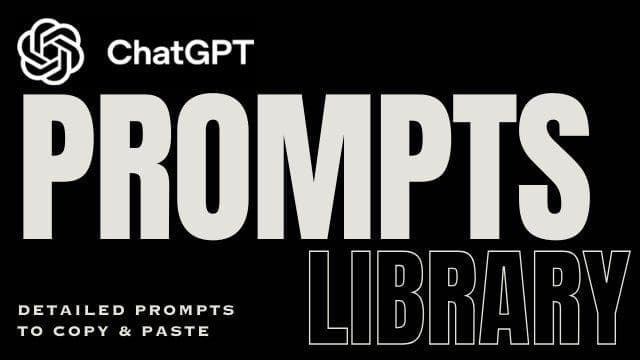AI Learning Centres:
- AI – Learn The Basics
- Get The Most From ChatGPT
- Branding in The Age of AI
- AI for Client Experience
- AI For Prospecting
- AI For Marketing
- AI For Listings & Ads
- Team Adoption of AI
- AI For PM
- AIO & Generative Search
- AI For Operations & Efficiency
- AI For Market Research & Analysis
- AI Ethics, Privacy & Compliance in Real Estate
Digital Marketing & Social Media Learning Centres:
Guides & Downloads

Essential Tech Tools for Real Estate Social Media Success
Social media can feel noisy and fast. The right tools make it simple. This guide shows the tools that help you plan, create, post, track, and turn attention into appraisals and listings. Each section explains what to use, why it helps, and how to fit it into a smooth weekly routine.
Build a simple tech stack that works
You do not need everything at once. Start small, then grow as you see results.
Starter stack
Phone camera and a small tripod
Canva for graphics and simple video edits
Meta Business Suite for posting to Facebook and Instagram
ChatGPT for ideas and captions
Native insights inside each platform
Pro stack
Lapel microphone, ring light, and a small mobile gimbal
CapCut for video editing with captions
Notion or Trello for planning content
Later or Buffer for scheduling across many channels
Link in bio tool to capture leads
Google Drive for teamwork and file storage
Team stack
Brand kit and shared Canva templates
Descript for editing and turning long videos into short clips
Zapier or Make to send leads to your CRM
CRM such as Rex, Agentbox, VaultRE, or Box+Dice
A monthly analytics dashboard shared with the team and vendors
Strategy and planning tools
Clear planning stops last minute stress and improves quality.
Notion or Trello. Use simple boards called Ideas, This Week, In Progress, Published. Add due dates and owners.
Google Calendar. Block a weekly content hour. Treat it like a listing appointment.
Google Sheets content calendar. Lay out four weekly themes. Example week one local market data, week two property tips, week three community spotlight, week four client story.
Notes app with voice to text. Dictate post ideas when you leave an open home or appraisal. Save quotes and quick stories while they are fresh.
Tip. Plan themes first, then fill in titles, then write captions. This keeps your feed focused and builds a recognisable story.
Design and branding tools
Your feed should look consistent, clean, and local.
Canva. Set your brand kit colours, fonts, and logo. Create templates for new listings, just sold, open home times, auction reminders, tips, and testimonials.
Template packs. Build five to ten reusable designs for square, vertical, and landscape sizes. Keep text large and easy to read on a phone.
Stock and local photos. Use your own suburb photos where possible. If you need extras, choose free libraries that allow commercial use. Always credit if required by the source.
Brand rules. Use the same colours, fonts, and logo placement every time. This builds trust and recall.
Video creation tools
Video is the fastest way to show skill and warmth.
Phone basics. Clean the lens. Shoot near a window for soft light. Hold the phone vertical for Shorts, Reels, and TikTok. Keep clips short and steady.
Audio. A simple lapel microphone that plugs into your phone lifts quality more than any other upgrade.
CapCut or VN. Trim clips, add captions, add b-roll of streets, parks, cafes, and schools. Use simple transitions and keep text short.
Captions. Turn on auto captions so viewers can follow along with the sound off. Fix any spelling errors before exporting.
Ideas that work. One tip for sellers, one myth about the local market, one quiet street highlight, one weekly wrap of buyer activity.
Photo tools
Crisp photos lift trust and click through.
Lightroom Mobile or Snapseed. Fix exposure, straighten lines, and enhance colours gently. Avoid heavy filters.
Remove background when needed. Cut out a property image or headshot to place on a clean design in Canva.
Resize for each channel. Square for grid, vertical for stories and reels, landscape for YouTube and LinkedIn banners.
AI writing and repurposing tools
AI saves time and keeps your voice clear.
ChatGPT for ideas and captions. Ask for five hook lines, three caption versions, and a call to action. Keep the brief specific to the suburb, price bracket, and buyer type.
Transcription tools. Use Otter, Notta, or built in phone transcription to turn spoken notes into draft posts.
Descript or Opus Clip. Turn a long market update into short clips with subtitles and headlines.
Helpful AI prompts
Write a 90 word caption that explains what changed in the suburb median price this quarter, for owners who are thinking of selling in the next six months.
Turn this three minute speaking outline into five short vertical video scripts with clear hooks and one call to action.
Give me ten post ideas that mix property tips, local stories, and client wins for this suburb and price range.
Scheduling and posting tools
Consistency beats volume. Schedule once a week and move on.
Meta Business Suite. Free and simple for Facebook and Instagram. Draft posts, add stories, tag locations, and schedule in one place.
Later or Buffer. Schedule across Instagram, Facebook, LinkedIn, Pinterest, and TikTok. Save hashtag sets and best posting times.
File workflow. Save final images and videos in a Google Drive folder called Ready to Post. Name files by date and platform to avoid mix ups.
Posting rhythm. Aim for three to five posts per week and one to two stories per day. Add a weekly vertical video. Reply to comments within one business day.
Analytics and reporting tools
Measure what matters so you can do more of what works.
Native insights. Check reach, watch time, saves, shares, and link clicks. These show real interest.
UTM links. Add simple tracking tags to bio links and ad links so website visits and form fills are easy to report.
Monthly dashboard. Track three numbers. Total views, total leads, total listing opportunities created. Add top three posts and what you learned.
Vendor reports. For active campaigns, add social stats to weekly vendor reports. Show views, clicks, and comments alongside enquiry numbers.
Lead capture and CRM integration
Your social content should make it easy to enquire or book an appraisal.
Link in bio tools. Use a clean page with three to five buttons. Example free suburb report, book a price update, current listings, past sales, contact.
Lead ads. Use Facebook and Instagram lead forms for seller guides, suburb reports, or auction reminders. Keep forms short. Ask for name, email, mobile, suburb.
Automation tools. Use Zapier or Make to send new leads into your CRM. Create a task for a same day call. Trigger a welcome email and a text message.
CRM options. Connect to Rex, Agentbox, VaultRE, or Box+Dice. Tag leads by source and suburb. Start a simple nurture plan with helpful updates every two weeks.
Social listening and alerts
Be the first to know what people say about your market.
Google Alerts. Set alerts for your name, your agency, your patch suburbs, and key landmarks.
Inbox streams. Use a scheduling tool with an inbox to reply to comments and messages in one place.
Saved searches. Inside each platform, save searches for your suburb and common phrases. Join the conversation with helpful facts.
Compliance and safety toolkit
Good systems protect you and your clients.
Privacy and consent. Get written consent before sharing client photos, testimonials, or private details. Store consent with the file.
Music rights. Use platform music libraries inside the app, or use royalty free tracks in your editor.
Truthful claims. Keep claims factual. Use recent sales, days on market, and median price from trusted sources. Avoid words that promise outcomes you cannot guarantee.
Records. Keep a folder of final posts and captions with dates. This helps if you ever need to review what was said.
A one hour weekly workflow that keeps you consistent
Use this simple routine to stay on track.
Check last week’s numbers. Note your top post and why it worked.
Pick one weekly theme. Example schools and parks in the patch.
Brainstorm five post titles with ChatGPT. Select the best three.
Record one short video on your phone. Aim for forty five to sixty seconds.
Edit the video in CapCut. Add captions and a clear call to action.
Design two Canva posts. One graphic tip. One carousel that teaches a simple idea in three frames.
Write three captions. Use a hook, one main point, then a clear next step.
Prepare a story set. Add behind the scenes photos and a poll question.
Schedule all posts in Meta Business Suite or your scheduler of choice.
Update your link in bio if needed. Check all links work.
Add UTM tags to any links that go to your website or booking page.
Set two small engagement blocks for the week. Ten minutes each to reply and connect.
Troubleshooting and quick fixes
When something breaks, use this checklist.
Low reach. Shorten the hook. Use a stronger opening line. Add local tags and location pins.
Low watch time. Cut the first three seconds if they are slow. Add captions and jump cuts.
Few enquiries. Tighten the call to action. Use one clear next step. Make sure your link in bio has the right buttons.
Inconsistent look. Rebuild your Canva templates with your brand kit. Limit fonts to two. Limit colours to two main and one accent.
No time. Batch record two or three videos in one session. Reuse ideas across reels, grid posts, and stories.
Quick equipment list under four hundred dollars
Phone tripod with a simple phone clamp
Clip on lapel microphone with a long cable
Small ring light for evening shoots
Portable power bank for long days
Soft cloth to clean the camera lens
Bringing it all together
Start with the simplest version that you can keep up each week. Use planning tools to set your themes. Use Canva and CapCut to make clear, clean content. Use a scheduler so you stay consistent. Track results and push leads into your CRM. Improve one small part each month. With this toolkit and routine, your social media will look better, feel easier, and turn more views into real conversations and listing opportunities.
Author Ken Hobson
ken@agentslibrary.com.au






